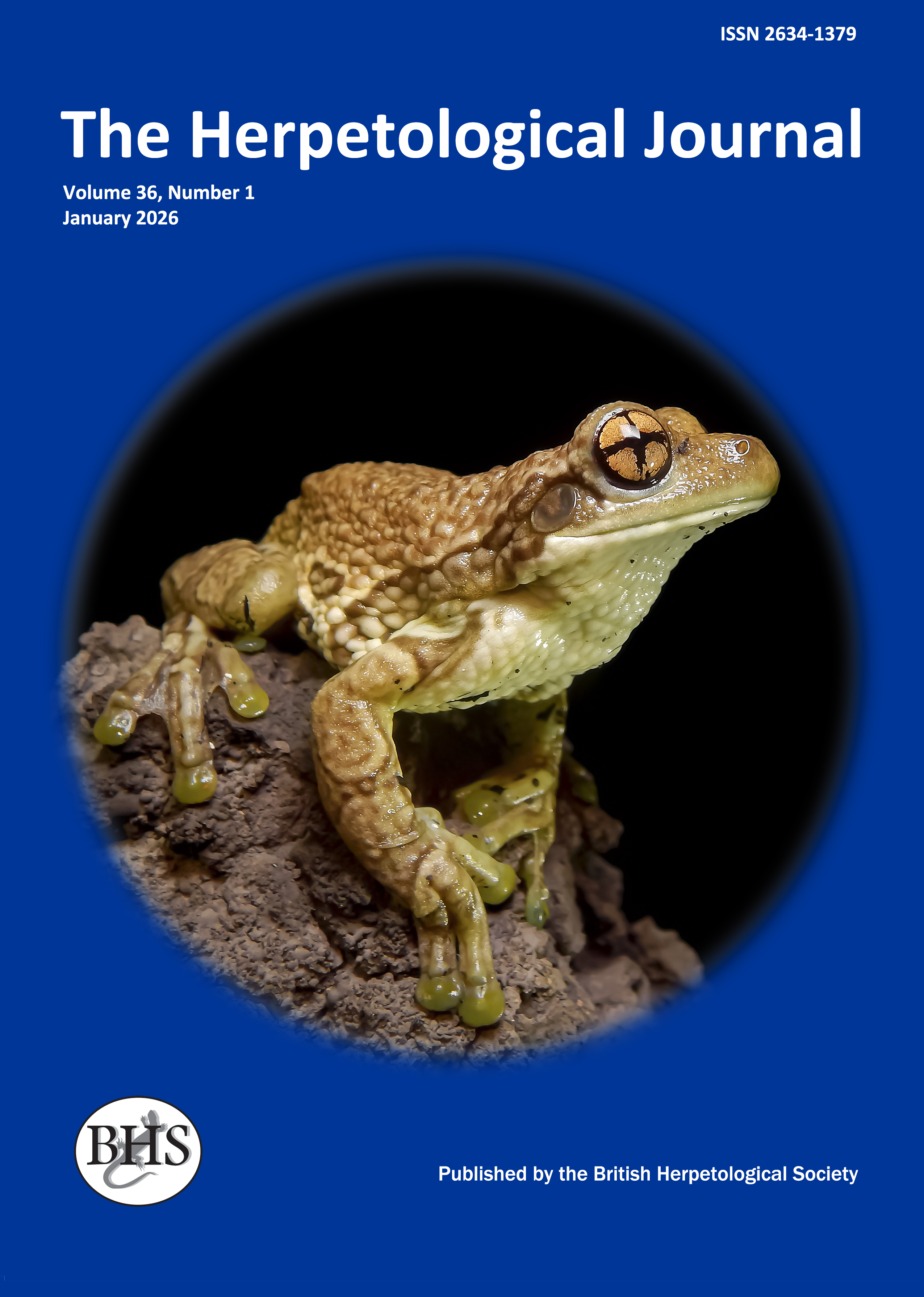
The Herpetological Journal
The Herpetological Journal is the Society's prestigious quarterly scientific journal. Articles are listed in Biological Abstracts, Current Awareness in Biological Sciences,Current Contents, Science Citation Index, and Zoological Record.
ISSN 0268-0130
2023 Impact Factor for the Herpetological Journal is 1.1, with the Journal sitting just below Quartile 2 in Zoology, at percentile 46.9
pdf 03. Sexual dimorphism and feeding habits of Adelophryne nordestina (Anura: Eleutherodactylidae) in an Atlantic Forest remnant in Northeast Brazil
22 downloads
Subscription / purchase required
DOI: https://doi.org/10.33256/35.3.198205
pp. 198-205
Authors: Laiana C. de Moura, Cícero R. Oliveira, Ednilza M. dos Santos & Igor J. Roberto
Abstract: Feeding habits are an important component of a species' ecological niche and may differ according to size, sex and seasonality. In this study, we analysed the presence of sexual dimorphism and tested the influence of said traits on feeding habits of the miniaturised frog Adelophryne nordestina. We gathered information from 85 individuals collected in the dry and rainy seasons in an Atlantic Forest remnant in the state of Pernambuco, north-eastern Brazil. We found pronounced sexual dimorphism in the species, with females having larger bodies than males. Formicidae was the most important item in the diet of A. nordestina, (IPS = 59.7% in pooled stomachs and ISS = 61.1% in individual stomachs), followed by Coleoptera (IPS = 11.1% in pooled stomachs and ISS = 13.1% in individual stomachs). There was no difference between volume or number of ingested prey and season, nor between males and females. We observed a moderate correlation between snout-vent length and the length of the largest ingested prey. However, no such correlation was found with the width of the largest ingested prey or the total volume of food items. This is one of the first ecological studies on the genus Adelophryne, elucidating aspects of sexual dimorphism and the diet of A. nordestina.
Keywords: body shape, diet, ecology, miniaturisation, seasonality

